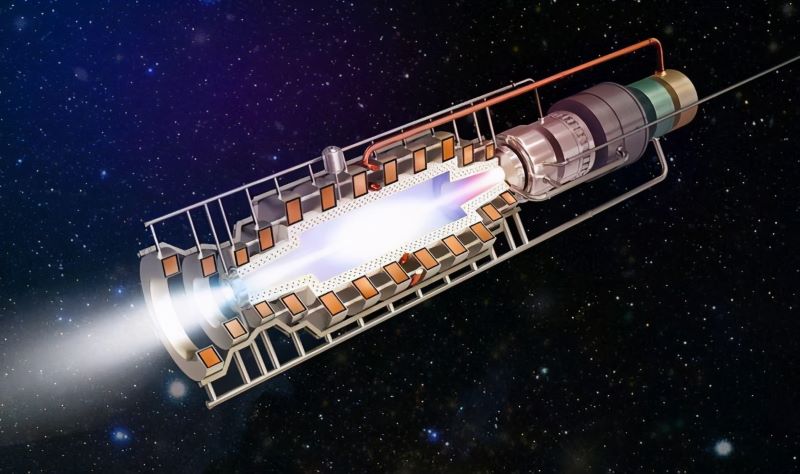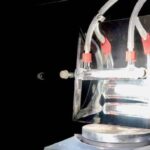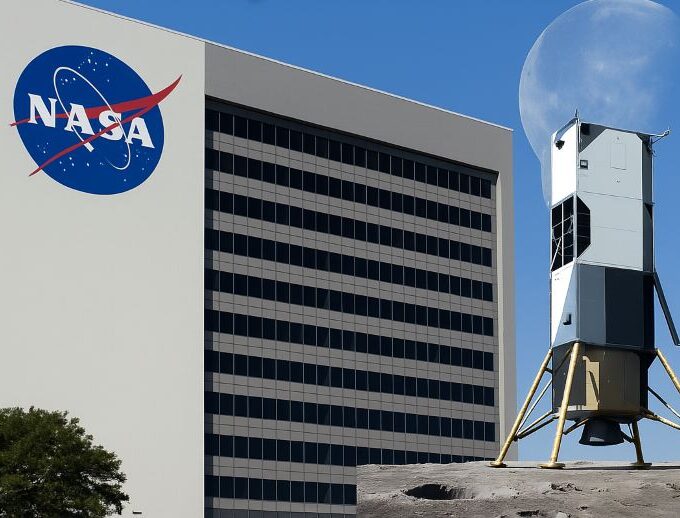General Atomics Electromagnetic Systems has successfully tested nuclear fuel that could power future rapid space missions, including to Mars. The tests, conducted in partnership with NASA, demonstrated the fuel’s durability in extreme space conditions, bringing one step closer to a practical nuclear thermal propulsion system for exploration of the Moon and deeper into space. In partnership with NASA, General Atomics has achieved a major milestone by testing a nuclear propulsion fuel that can withstand the extreme space environment, marking another step closer to a human mission to Mars.
Technology Challenges of Overcoming Extreme Environments
General Atomics Electromagnetic Systems (GA-EMS) recently announced that the company has successfully completed a series of critical tests at NASA’s Marshall Space Flight Center (MSFC). The tests are a major step in developing nuclear thermal propulsion (NTP) technology that could enable faster, more efficient transportation for engineered missions to the Moon, Mars and beyond. Tests conducted in partnership with NASA evaluated whether GA-EMS’ specially designed nuclear fuel can withstand the extreme conditions required for space travel.
Scott Forney, President of GA-EMS, said, “The recent test results are an important milestone in successfully demonstrating the NTP reactor fuel design. The fuel must be able to survive the extremely high temperatures and hot hydrogen environments that NTP reactors operating in space will typically encounter. We are encouraged by the positive test results demonstrating the fuel’s ability to survive these operating conditions, bringing us closer to realizing the potential of safe, reliable nuclear thermal propulsion for lunar and deep space missions.”
A Collaborative Breakthrough in Materials Science and Engineering Design
GA-EMS performed multiple high-shock tests at NASA’s MSFC in Huntsville, Alabama. The nuclear fuel was tested with hot hydrogen flowing through the samples and subjected to six thermal cycles with temperatures rapidly increasing to a peak of 2600 K (Kelvin) or 4220° Fahrenheit. Each cycle included a 20-minute hold at peak performance to demonstrate the effectiveness of protecting the fuel material from hot hydrogen attack and degradation. Additional tests with different protection features were conducted to provide further data on how different material improvements can improve performance under reactor-like conditions.
“To our knowledge, we are the first company to successfully test and demonstrate the ability of a fuel to survive thermal cycling at temperatures and slopes representative of hydrogen using the Compact Fuel Element Environmental Test (CFEET) facility at NASA MSFC,” said Dr. Christina Back, Vice President of Nuclear Technology and Materials at GA-EMS. “We also conducted non-hydrogen environmental testing in our GA-EMS laboratory, and the results confirmed that the fuel performs exceptionally well at temperatures up to 3000 K, which will make the NTP system two to three times more efficient than traditional chemical rocket engines. We are excited to continue working with NASA to mature the fuel to meet the performance requirements of future interplanetary and Mars mission architectures.”
Technology Cornerstones for Humans to Mars
According to NASA’s planning, the first space test of the NTP system is expected to be carried out in the early 2030s, with the goal of providing power support for manned Mars missions after 2035. Next, GA-EMS will work with Idaho National Laboratory (INL) to further optimize the fuel design and conduct ground integration tests of the full-scale reactor.
The success of NASA’s high-temperature test of nuclear fuel is not only a victory for materials science, but also a microcosm of the human spirit of exploration. From the chemical rockets of Apollo’s moon landing to today’s nuclear thermal propulsion, every technological breakthrough has brought the dream of interstellar travel one step closer. With the joint advancement of global aerospace forces, a new era of deep space exploration marked by nuclear power is quietly approaching. Future Mars explorers may look back on today and remember this technological leap forged in the 2600K flames.












